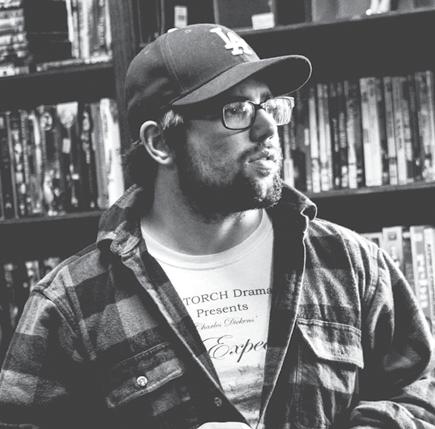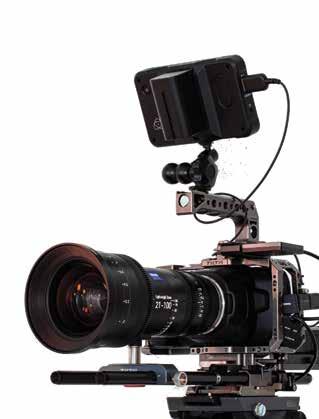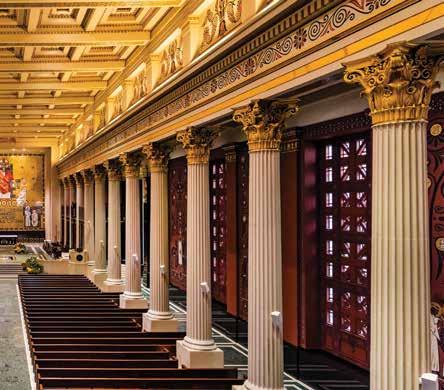
5 minute read
THE FINAL WORD
THE FINAL WORD with Joe Duca
A Few Notes on SCULPTING TIME
Advertisement
I’m a filmmaker by trade and philosopher by degree, thus I often procrastinate. One favorite procrastination method is mulling the question: What is the Catholic artist’s call — particularly the Catholic filmmaker— in society? Or rather, what is the filmmaker’s call, considering the call of Christians?
When someone expresses a thought much better and truer than I can, I have two options: say it simpler or simply acknowledge they said it so much better and truer that I must quote them at length. The latter is how I feel about these words from the great Russian director Andrei Tarkovsky:
“The allotted function of art is not, as is often assumed, to put across ideas, to propagate thoughts, to serve as example. The aim of art is to prepare a person for death, to plough and harrow his soul, rendering it capable of turning to good. Touched by a masterpiece, a person begins to hear in himself that same call of truth which prompted the artist to his creative act. When a link is established between the work and its beholder, the latter experiences a sublime, purging trauma. Within that aura…the best sides of our souls are made known, and we long for them to be freed. In those moments we recognize and discover ourselves, the unfathomable depths of our own potential, and the furthest reaches of our emotions.”
In short—whether poetry or painting, Swan Lake or oboe playing—art’s purpose is essentially contemplative, not rhetorical, so that it gets you to see something, rather than do something. It is not primarily advertising or propaganda, instead, by purging our hearts and ordering our emotions, art enables us to see life with greater clarity. And this prepares us to face death free and full of hope.
Of all the arts, film is especially suited to open our eyes, ears and ultimately, our hearts by enveloping us in sight and sound. Tarkovsky points out film’s unique ability to “sculpt time.” The director can mysteriously capture, cut and move pictures and sounds around, to “seize and render the passage of time…stop it, almost to possess it in infinity,” like a memory or dream. Thus, the filmmaker has an incredible opportunity to share an experience— a memory, dream, or story – that can at the same time expand the mind and still the heart, offering a glimpse of eternity in 24 frames.
All this gives us insight into what it means to be a Catholic filmmaker. Our responsibility is “to recreate life, its movement, its contradictions, its dynamic and conflicts,” our duty is “to reveal every iota of the truth” we have seen, even “if not everyone finds that truth acceptable.” We are called to share the moments we held on to faith, the dreams that gave us hope, the sacrifices that deepened our love—even the jokes that kept us smiling when we wanted to despair. Perhaps especially that. To give an account of the joy that is in us, in all its strangeness, particularity, mystery, intrigue, romance, with all its thrills and laughter—that is our task.
In It’s a Wonderful Life, when George Bailey begs to live again, we do too. And that’s our power as Catholic artists, to stop time and witness to the truth, to share why we dare to hope that all things will be made new.
It’s a relief, honestly, that in films we aren’t necessarily called to spell out truth or dissect meaning with a scalpel. Overly didactic movies don’t sit well for a reason: A film’s power isn’t in advertising, it’s in empathy. As Tarkovsky said, “If you look for meaning, you’ll miss everything that happens.” To unpack that thought, I suggest his book, Sculpting in Time, because he’s a master and I’m running out of room.
I suggest this is the Catholic filmmaker’s role: to sculpt memories, dreams, imaginings – to offer a thrilling, mysterious, romantic, hilarious account of the hope that is in us. To harrow the soul with seeds of a new vision, new dreams, new life.
JOE DUCA


Help the Cathedral Basilica bring the Good News into focus!
NOW FUTURE

Since the outbreak of COVID-19, we have seen the importance of technology. Daily Masses streamed from the cathedral basilica have become an important touchpoint for many of our elderly, ill and those still wary of attending Mass. We would like to provide something more for them by increasing the quality of our streamed video content.
We have been presented with a marvelous opportunity for funding our video upgrade with a matching-gift challenge. A donor will contribute up to $45,000 in a dollar-fordollar match.
At this present time our video system consists of a singular camera in the far rear of the church. With a multi-camera automatic system, we will have a finer quality for our daily and special Masses, including ordinations, weddings and funerals. The cost of a new system is $105,000. This design will allow us to provide a quality presentation automatically so as not to have to hire a crew for production purposes and avoid a monthly streaming fee.
We need your help and hope you will accept our invitation to provide this service to further share the Good News of Jesus Christ.

Give online at cathedralaoc.org
I would like to support the Cathedral Basilica of St. Peter in Chains’ video system upgrade.
City ___________________________________ State ________ Zip ____________
Amount ___________________ Exp. Date ____________ Phone _____________________
Mail this form, along with your payment to: Cathedral Basilica of St. Peter in Chains, 325 W 8th Street, Cincinnati, OH 45202 Your donation is tax deductible. Save a copy of this document for your records!
100 E. 8th St. • Cincinnati, OH 45202











